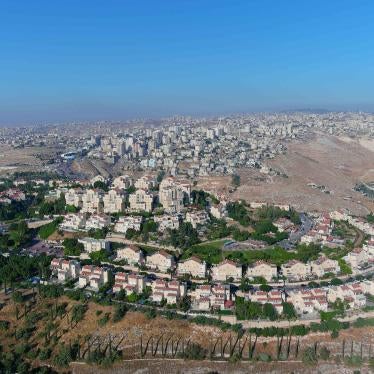On April 14, 2002, Israel’s cabinet approved construction of a “separation barrier,” ostensibly to halt a wave of deadly attacks inside Israel by Palestinians from the occupied West Bank.
Last week, 20 years later, I drove up to a horse farm that illustrates how the barrier serves another purpose: solidifying Israeli control over large chunks of the West Bank.
About four-fifths of the approved barrier route runs not along the pre-1967 border but inside the West Bank, effectively connecting to Israel large blocks of illegal settlements and land eyed for settlement expansion. The International Court of Justice determined in 2004 that the barrier’s route violates international law.
For a generation now, that route has harshly restricted Palestinian freedom of movement, and contributed to the fragmentation of Palestinian life and Israel’s crimes against humanity of apartheid and persecution. Among the hardest hit are farmers who are denied easy access to their crops and fields on the other side, and residents of “encircled” villages like Azzun 'Atmah, around which the barrier winds almost 360 degrees to separate it from four nearby Israeli settlements.
One of them is Shaarei Tikvah. As is standard, the barrier was built well beyond the settled part of the settlement, creating a buffer zone between Shaarei Tikvah’s original perimeter fence and the barrier, much of it consisting of land seized – supposedly temporarily – from Palestinians.
If the purpose of this buffer was to keep would-be assailants far from potential targets, it seems not all of Sha’arei Tikvah’s residents got the message. For years, some of them have been passing through the settlement’s original fence to operate horse farms in the buffer zone.
The farms sit on land next to the barrier, which in this area consists not of a wall but a high chain-link fence. North of that fence, the Palestinian owners of the land have a clear view of Israelis riding horses among their olive trees.
According to a 2018 report by the Israeli human rights organization Kerem Navot, settlers operate many such stables on private Palestinian land in the West Bank. Israel’s four state-mandated health maintenance organizations reimburse Israelis who take therapeutic riding lessons at some of them: one of the many ways the state subsidizes the illegal settlement enterprise.
If it is therapeutic for Israelis to take riding lessons on Palestinian land less than 100 meters from the separation barrier, what is the security imperative for denying regular access to its owners?









